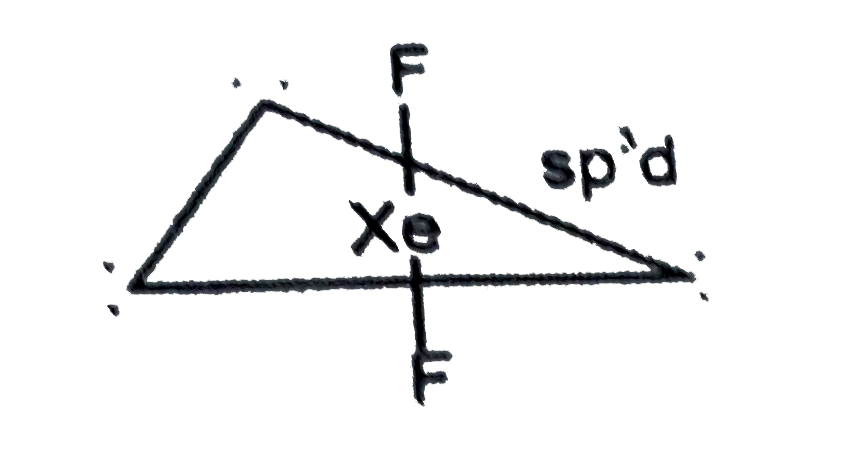White crystalline solid (A) reacts with H2 to form a highly associated liquid (B) and a monoatomic, colourless gas ( C).The liquid (B) is used for etching glass.Compound (A) undergoes hydrolysis slowly to form ( C).(B) and a diatomic gas (D) whose IE is almost similar to that of ( C).(B) forms an addition compound with KF to form (E).which is electrolysed in the molten state to form a most reactive gas (F) which combines with ( C) in 2:1 ratio of produce (A).
The compound 'A' reacts with sulphur to form a compound in which hybridisation state of sulphur atom is
sp3d
sp3d2
sp3
sp3d3
The correct Answer is:B
XeF2(A)+H2→Xe(g)(C)+2HF(l)(B)
2XeF2(A)+2H2O→2Xe(g)(C)+4HF(B)+O2(g)(D)
HF+KF→KHF2(E)Electrolysis−−−−−−→F2(F)
K+[F−H...F]−
Xe1:2+F2+XeF2,S8+24+XeF2→8SF6+24Xe
(C) (F) (A)

Topper's Solved these Questions
- P-BLOCK ELEMENTS (HALOGEN & NOBLE GASES)BOOK - RESONANCE ENGLISHCHAPTER - P-BLOCK ELEMENTS (HALOGEN & NOBLE GASES)EXERCISE - APSP PART-2
21 Videos
- P-BLOCK ELEMENT (BORON AND CARBON FAMILY)BOOK - RESONANCE ENGLISHCHAPTER - P-BLOCK ELEMENT (BORON AND CARBON FAMILY)EXERCISE - PART - III : OLYMPIAD PROBLEMS (PREVIOUS YEARS) STAGE - V (INTERNATIONAL CHEMISTRY OLYMPIAD (IChO)) Problem 3
8 Videos
- PERIODIC TABLE & PERIODICITYBOOK - RESONANCE ENGLISHCHAPTER - PERIODIC TABLE & PERIODICITYEXERCISE - Advanced Level Problems
105 Videos
Similar Questions
White crystalline solid (A) reacts with H2 to form a highly associated liquid (B) and a monoatomic , colourless gas (C ). The liquid (B) is used for etching glass. Compound (A) undergoes hydrolysis slowly to form (C ), (B) and a diatomic gas (D ) whose IE is almost similar to that of (C ). (B) forms an addition compound with KF to form (E) which is electrolysed in the molten state to form a most reactive gas (F) which combines with (C ) in 2:1 ratio of produce (A).
Which of the following is correct for the white crystalline solid (A) ?
View SolutionWhite crystalline solid (A) reacts with H2 to form a highly associated liquid (B) and a monoatomic , colourless gas (C ). The liquid (B) is used for etching glass. Compound (A) undergoes hydrolysis slowly to form (C ), (B) and a diatomic gas (D ) whose IE is almost similar to that of (C ). (B) forms an addition compound with KF to form (E) which is electrolysed in the molten state to form a most reactive gas (F) which combines with (C ) in 2:1 ratio of produce (A).
According to Molecular Orbital Theory, which of the following is correct about the molecule (D) ?
View SolutionA crystalline solid (A) reacts with hydrogen gas to form a monoatomic gas (B) and a highly associated liquid ( C).(A) is soluble in water and undergoes hydroloysis slowly to form (B),(C ) and a diatomic gas (D).When pure and dry (D) is subjected to a silent electric discharge an another pale blue gas (E) is produced which like (A) also acts a strong oxidising agent.(E) dissolves in potassium hydroxide forming an orange coloured solid which is paramagnetic in nature. (A) reacts with IF5,SbF5,PF5 etc to form the addition compounds. (C ) forms an addition compound (F) with KF with when electrolysed in molten state forms a most reactive gas (G).(B) and (G) (taken in 2:1) ratio when heated in nickel tube at 400∘C and 6 atm pressure forms (A).The first ionization energy (IE1) of (B) is fairly close to (D).
Which of the correct choice for (D) and (E) ?
View SolutionA crystalline solid (A) reacts with hydrogen gas to form a monoatomic gas (B) and a highly associated liquid ( C).(A) is soluble in water and undergoes hydroloysis slowly to form (B),(C ) and a diatomic gas (D).When pure and dry (D) is subjected to a silent electric discharge an another pale blue gas (E) is produced which like (A) also acts a strong oxidising agent.(E) dissolves in potassium hydroxide forming an orange coloured solid which is paramagnetic in nature. (A) reacts with IF5,SbF5,PF5 etc to form the addition compounds. (C ) forms an addition compound (F) with KF with when electrolysed in molten state forms a most reactive gas (G).(B) and (G) (taken in 2:1) ratio when heated in nickel tube at 400∘C and 6 atm pressure forms (A).The first ionization energy (IE1) of (B) is fairly close to (D).
Which of the following statements is true ?
View SolutionA crystalline solid (A) reacts with hydrogen gas to form a monoatomic gas (B) and a highly associated liquid ( C).(A) is soluble in water and undergoes hydroloysis slowly to form (B),(C ) and a diatomic gas (D).When pure and dry (D) is subjected to a silent electric discharge an another pale blue gas (E) is produced which like (A) also acts a strong oxidising agent.(E) dissolves in potassium hydroxide forming an orange coloured solid which is paramagnetic in nature. (A) reacts with IF5,SbF5,PF5 etc to form the addition compounds. (C ) forms an addition compound (F) with KF with when electrolysed in molten state forms a most reactive gas (G).(B) and (G) (taken in 2:1) ratio when heated in nickel tube at 400∘C and 6 atm pressure forms (A).The first ionization energy (IE1) of (B) is fairly close to (D).
Which of the following statements is correct for (A) ?
View SolutionMagnesium combines with nitrogen to form a nitride, which reacts with water to form a colourless gas. The gas is
View Solution
What is compound (B) and how is it formed ?
View SolutionIf liquids A and B form an ideal solution.
View SolutionAn aromatic compound A on heating with Br, and KOH forms a compound B of molecular formula CHN which on reacting with CHCI and alcoholic KOH produces a foul smelling compound C. Write the structures and IUPAC names of compounds A, B and C.
View SolutionAn ionic compound A+B− is most likely to be formed when :
View Solution